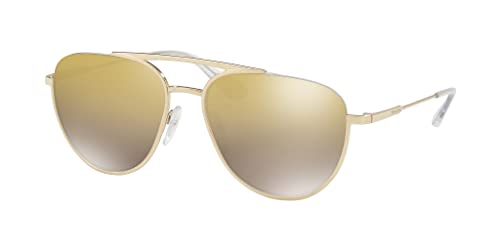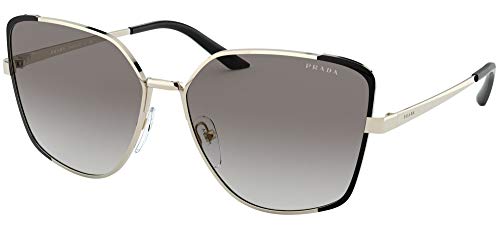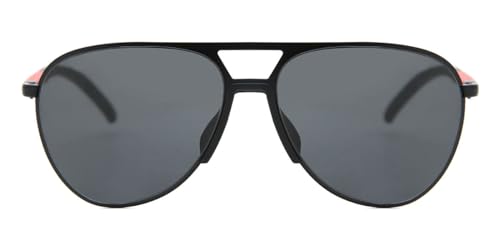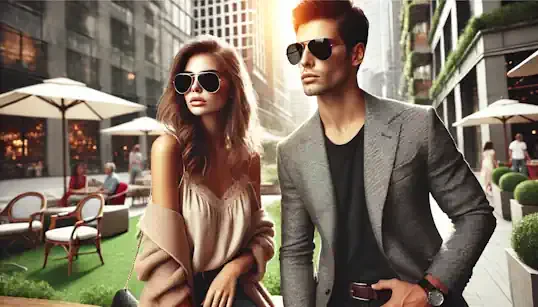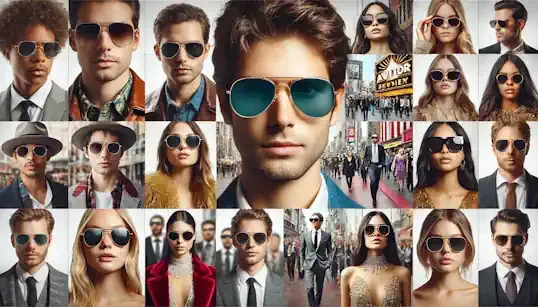Imagine the opening chord of that guitar riff – the one that sends shivers down your spine, that instantly transports you to a specific time, a particular feeling. Now, in your mind’s eye, picture the artist delivering that riff: cool, collected, fingers dancing across the fretboard, and almost certainly, framed by the unmistakable glint of aviator sunglasses. Aviator sunglasses and music. The connection is undeniable, visceral, almost symbiotic. From the smoky backrooms of blues clubs to stadium stages bathed in blinding lights, from gritty punk rock dens to the hyper-polished world of pop, aviators have been a constant, a visual riff echoing through the decades of musical evolution. They are not mere accessories casually donned; they are recurring motifs, visual punctuation marks in the grand narrative of music history. They are more than just shades for musicians; they are a visual language, a carefully cultivated tool for persona creation, a silent partner in crafting image, and a symbol deeply, inextricably intertwined with musical identity itself.
Across genres and eras, the glint of aviator frames on a musician’s face resonates with a specific kind of cool, a particular sonic attitude. Think of the soulful detachment of blues pioneers, the rebellious swagger of early rock gods, the edgy defiance of punk icons, the down-to-earth authenticity of country legends, the opulent confidence of hip-hop royalty, or the fashion-forward allure of pop sensations. In each instance, the aviator, though subtly styled and interpreted, plays a crucial role in amplifying the visual message, in strengthening the artistic statement, in adding another layer to the “shades of sound” that define each genre and artist. This article is a journey into that fascinating intersection, an exploration of the profound and enduring relationship between aviator sunglasses and music culture. We will trace their sonic and visual journey from the rebellious birth of rock and roll to the multifaceted landscape of modern music icons, analyzing how these iconic shades have contributed to the image, the persona, and even the very perceived "sound" of musicians across a vast spectrum of genres and through the ever-evolving chapters of music history. Prepare to see music in a new light, to hear the unspoken notes within the visual language of aviators, and to understand why, for so many musicians, these iconic sunglasses are not just an accessory, but a vital instrument in their symphony of style and sound.
To understand the power of aviators in music, we must first journey back to the post-war era, a time of cultural upheaval, societal shifts, and the explosive birth of youth culture that irrevocably altered the landscape of music forever. In the aftermath of World War II, a new generation emerged, eager to break free from the constraints of the past, hungry for a sound, a style, a visual language that reflected their burgeoning sense of rebellion and individuality. Rock and roll exploded onto the scene, raw, electrifying, and unapologetically rebellious, and with it came a visual revolution, a deliberate rejection of the staid formality of previous generations. Aviator sunglasses, with their military origins, became potent symbols in this visual revolution. Initially designed for military aviators, they were re-appropriated, almost subversively, as emblems of cool defiance and nonconformity. The very utilitarian nature of their design, their association with authority and skill, was flipped on its head, transformed into a visual declaration of independence, a subtle rejection of established norms, a whisper of rebellion worn right on the face.
Even before the full force of rock and roll, blues and soul pioneers were already utilizing aviators to cultivate their own brand of soulful cool. Blues musicians, often playing in dimly lit clubs, adopted sunglasses not only for stage lighting but also as a shield, a way to enhance their enigmatic stage presence and amplify the emotional depth inherent in their music. Think of the legendary Ray Charles, whose iconic aviators became inextricably linked to his image, so much so that they transcended mere accessory to become a visual metonym for the artist himself. For Charles, aviators were not simply a stylistic choice, but a necessity born from his visual impairment. Yet, in their ever-present nature, they became something far more profound. They were not just functional; they were integral to his persona, adding to the mystique, enhancing the soulful intensity of his performances, and becoming a powerful visual symbol of his unique artistic voice. For other blues guitarists of the era, aviators served a different but equally powerful purpose, enhancing their “cool detachment,” adding to the mystique of the traveling bluesman, the enigmatic figure pouring raw emotion into every note, seemingly unfazed by the world around them, shielded behind the cool, dark lenses of their aviators. Aviators in blues and soul amplified the inherent emotional depth, the soulful undercurrent that defined these genres, adding a layer of visual intrigue to the already intensely personal and evocative music.
As rock and roll exploded, taking center stage in youth culture, aviator sunglasses became an essential element in forging the emerging “rockstar persona.” Early rock guitar gods and frontmen, figures like the Rolling Stones in their early, rebellious phase, and even moments within the Beatles’ visual evolution, embraced aviators as potent tools in crafting their image. For these artists, aviators weren’t just about looking cool; they were about embodying the rebellious spirit of rock and roll itself. They were about projecting confidence, swagger, a touch of aloofness, all crucial components of the nascent rockstar archetype. Aviators became part of the visual vocabulary of rock and roll rebellion, a subtle but instantly recognizable marker of a new generation breaking free from the stylistic and societal constraints of the past. They were worn on stage, in promotional photos, and crucially, on album covers – the visual gateway to a musician’s artistic world. Early album art, particularly in rock and roll, soul, and blues, strategically featured musicians in aviators, understanding their potent visual impact. These visuals weren’t just decorative; they were integral to building the “brand” of these artists, solidifying the association of aviators with cool, groundbreaking music. Album covers became canvases for image creation, and aviators, prominently featured, contributed significantly to establishing the visual identity of these musical pioneers, cementing their place in the iconography of cool music.
As music evolved, pushing boundaries and exploring new sonic territories, so too did the visual language of musicians. The raw rebellion of early rock and roll gave way to new forms of edgy expression, from the safety-pin adorned anarchy of punk to the stylized cool of new wave and the theatrical excess of glam rock. And through it all, aviator sunglasses remained, not as a static symbol, but as a remarkably adaptable visual tool, reinterpreted and re-contextualized to reflect the shifting aesthetic sensibilities of each genre. Punk rock, born from a raw, anti-establishment ethos, took the classic aviator image and often subverted it, twisting its associations, injecting it with irony and aggression. Punk musicians might wear aviators in deliberately mismatched or deconstructed outfits, using them to amplify their rejection of mainstream style, their deliberate embrace of anti-fashion. Aviators in punk hands could become almost weaponized, less about projecting cool detachment and more about shielding oneself from the perceived conformity of the establishment, a visual shield of defiance against the status quo.
New wave, emerging from the ashes of punk, embraced a more stylized, fashion-conscious aesthetic, yet retained a crucial undercurrent of edginess. New wave artists integrated aviators into their looks, often in a sleeker, more deliberately fashionable manner. Aviators in the new wave era became part of a carefully constructed visual presentation, enhancing the genre’s blend of futuristic cool, artful detachment, and sophisticated urbanity. They were not just a rebellious accessory, but a key component in a meticulously curated image, reflecting the genre’s emphasis on visual style as an integral part of the artistic statement. Glam rock, with its flamboyant theatricality and embrace of visual excess, took aviator sunglasses into entirely new, glittering territories. Glam rock artists incorporated aviators, often in wildly stylized and flamboyant ways, perfectly fitting the genre’s theatricality and visual maximalism. Mirrored lenses, naturally amplifying the stage lights and reflecting the spectacle back at the audience, became a glam rock staple. Colored frames, metallic finishes, and even subtle embellishments transformed aviators into instruments of pure visual spectacle, enhancing the androgynous, visually arresting stage personas that defined the genre. Glam rock aviators were not about understated cool; they were about visual impact, about amplifying the theatricality, about adding another layer of shimmering, attention-grabbing brilliance to already visually maximalist stage personas.
The rise of MTV in the 1980s irrevocably altered the landscape of music, ushering in an era where visual identity became even more crucial, arguably as important as the music itself. Music videos became the primary vehicle for artist promotion, and visual image, meticulously crafted and carefully curated, became paramount for success. In this visually driven MTV era, aviator sunglasses became an even more potent and ubiquitous visual tool for musicians across all genres. Music videos from the 80s are replete with examples of strategic aviator use, from rock anthems to synth-pop ballads. Aviators were employed to enhance artist image, to convey specific moods, to reinforce lyrical themes, and to create instantly memorable visual moments that would resonate with MTV’s vast viewing audience. For musicians navigating the visually saturated MTV landscape, aviator sunglasses offered a reliable, instantly recognizable, and endlessly adaptable tool for crafting a compelling visual identity, a crucial component in standing out and capturing attention in an increasingly competitive visual arena.
Moving into genres like country, folk, and Americana, aviator sunglasses took on a different resonance, connecting to a different facet of “cool” – one rooted in authenticity, down-to-earth charm, and classic Americana style. While rock and pop often utilized aviators to project rebellion or high-fashion glamour, country, folk, and Americana artists often adopted them to convey a more grounded, less overtly “rockstar” brand of cool, one that emphasized sincerity, tradition, and a connection to classic American imagery. In these genres, aviators often projected an image of quiet confidence, of understated style, of an artist deeply rooted in their craft and their musical heritage, less concerned with fleeting trends and more focused on timeless authenticity.
Johnny Cash, the “Man in Black,” stands as a quintessential example of a country icon who inextricably linked aviator sunglasses to his signature image. Cash’s aviators, often simple, classic styles, became as much a part of his “Man in Black” persona as his dark attire and resonant baritone voice. For Cash, aviators contributed to his image of quiet strength, introspection, and a subtle, outlaw cool that resonated deeply with audiences. They weren’t about flashy style; they were about enhancing his aura of mystery, his sense of quiet authority, and his connection to the themes of hardship, redemption, and resilience that defined his music. The specific type of aviators Cash favored, often classic Ray-Ban styles, became visually synonymous with the artist himself, instantly recognizable and deeply ingrained in his enduring iconic image. Modern country artists continue to utilize aviators, often blending classic Americana vibes with contemporary fashion sensibilities. Aviators in modern country are often styled in a way that balances tradition and trend, incorporating contemporary frame materials, subtle lens tints, or stylistic details that align with current fashion trends while still retaining the core Americana aesthetic. In the often-stylized world of modern country music, aviators can subtly contribute to a sense of “authenticity,” grounding the often-polished visual presentation with a touch of classic, understated cool, linking contemporary artists to the genre’s rich visual and musical heritage.
In the hyper-stylized worlds of hip-hop, pop, electronic music, and R&B, aviator sunglasses have undergone yet another series of fascinating reinterpretations, adapting to the evolving visual languages of these diverse and genre-bending musical landscapes. In hip-hop culture, aviators have often been embraced as potent symbols of luxury, status, and urban edge. Hip-hop artists, known for their embrace of aspirational style and high-end fashion, often favor aviator styles that convey wealth, confidence, and a commanding presence. Bolder frames, often in luxurious materials like gold or platinum finishes, luxury brand aviators prominently displaying designer logos, and mirrored lenses, amplifying the visual statement, are often favored in hip-hop contexts. Aviators in hip-hop become part of a larger visual language of self-expression, a key component in projecting an image of success, power, and undeniable urban cool, seamlessly integrated into the genre’s signature blend of street style and high fashion. Pop sensations, navigating the hyper-visual and trend-driven world of mainstream pop music, utilize aviators in ways that are often highly stylized, fashion-forward, and meticulously curated to enhance their overall brand and stage persona. Pop stars often integrate aviators into elaborate stage costumes, high-concept music video visuals, and carefully constructed promotional campaigns. Aviators in pop music become tools for projecting a polished, glamorous, and often intentionally unattainable “pop star” image, contributing to the overall spectacle and aspirational appeal of the genre.
In the often-enigmatic and visually focused world of electronic music, aviators take on a slightly different resonance, sometimes projecting a futuristic, tech-influenced vibe, reflecting the genre’s sonic explorations of technology and innovation, or conversely, conveying an understated, cool detachment, mirroring the often-immersive and intensely personal nature of electronic music creation. Electronic musicians and DJs, often performing in dimly lit clubs or visually saturated stage environments, sometimes utilize aviators as part of their stage personas, enhancing their visual mystique or creating a consistent visual signature. The contrast between the often-high-tech, futuristic soundscapes of electronic music and the classic design of aviators creates an interesting visual tension, a subtle juxtaposition of tradition and innovation that reflects the genre’s own exploration of sonic boundaries and stylistic experimentation.
But why do aviators, across such diverse musical genres and eras, consistently resonate? What is it about these iconic sunglasses that makes them such a potent visual tool for musicians across the spectrum? The answer lies, in part, in the psychological power of sunglasses as a “mask,” a tool for persona creation and the cultivation of cool detachment. Sunglasses, as we have explored, inherently create a sense of mystery, allowing musicians to control their image, to shield their emotions, to cultivate an air of enigmatic cool that enhances their stage presence and mystique. Aviators, with their historical associations with authority and coolness, amplify this “mask of cool” effect, providing musicians with a powerful visual tool for crafting and controlling their public persona. This “mask” can be both a conscious performance tool, strategically employed to enhance stage presence and visual impact, and a subtle form of self-preservation, a way for musicians to manage the intense pressures of fame and maintain a degree of personal privacy amidst the constant glare of the public spotlight. Beyond persona creation, the timelessness of the aviator design is a crucial element in its enduring appeal within music culture. Despite the ever-shifting sands of fashion trends, aviators, in their core silhouette, remain consistently stylish, possessing a timeless quality that resonates with the desire for enduring musical artistry. Wearing aviators can be interpreted as a subtle nod to music history, a way for artists to consciously or unconsciously tap into a lineage of “cool,” aligning themselves with the countless musical icons who have donned these iconic shades across the decades.
Crucially, the visual versatility of aviators is what makes them so adaptable to diverse musical styles and aesthetics. From the raw rebellion of rock to the polished glamour of pop, from the grounded authenticity of country to the futuristic cool of electronic music, aviator sunglasses can be styled and reinterpreted to seamlessly fit a vast spectrum of musical moods and visual narratives. Through subtle variations in frame styles, lens colors, and overall styling, aviators can be adapted to suit virtually any musical genre, demonstrating a remarkable visual flexibility that contributes to their sustained appeal across the musical spectrum. Finally, the psychological projection of confidence and coolness intrinsically linked to aviator sunglasses becomes a powerful asset for musicians, particularly performers who rely on stage presence and audience engagement. Musicians can consciously leverage this psychological effect, utilizing aviators as a tool to enhance their stage presence, project self-assurance to their audiences, and amplify the overall impact of their performances. Aviators, in this context, become more than just an accessory; they become a performance tool, a visual amplifier of stage presence, a subtle yet potent instrument in the symphony of sound and style that defines the world of music.
Beyond the bright lights of the stage, aviator sunglasses continue to play a crucial role in shaping the image and persona of musicians, extending into album covers, music video narratives, and even candid paparazzi shots that contribute to the overall “brand” of cool cultivated by musical artists. Album covers, often the first visual introduction to a musician’s artistic world, frequently utilize aviators strategically to convey a particular message or visual narrative. An artist donning aviators on an album cover might be signaling a shift in sonic direction, reinforcing a specific mood or theme within the music, or simply solidifying their visual brand and recognizable image. Music videos, those visually rich and meticulously crafted short films accompanying musical releases, offer endless opportunities for strategic aviator placement, enhancing the visual storytelling and reinforcing the artist’s desired persona. Aviators in music videos can be used to create specific visual effects, to amplify character traits, to contribute to the overall aesthetic mood, and to craft instantly iconic visual moments that resonate with viewers long after the song ends.
Even in candid paparazzi shots and “off-duty” moments, musicians are frequently photographed in aviator sunglasses, subtly and often unintentionally contributing to their overall “cool” image beyond the carefully curated confines of performance and promotion. These candid shots, capturing glimpses of musicians in their everyday lives, further solidify the association of aviators with effortless cool and a desirable celebrity lifestyle. While these “off-duty” moments may appear spontaneous, they are often subtly curated, part of a larger, often unconscious, image-building process. And aviators, consistently present in these off-stage moments, become a visual anchor, reinforcing the perception of a consistent and effortlessly cool persona, both on and off the stage. For some musicians, aviator sunglasses transcend mere accessory to become a signature element of their personal brand and visual identity, a conscious or unconscious choice that becomes deeply ingrained in their public image. Consistent aviator use, across album covers, music videos, stage appearances, and even candid photographs, contributes to brand recognition, creating a lasting visual association with a particular artist, and solidifying their place within the pantheon of musically cool icons. Aviators, in this context, become far more than just eyewear; they become an integral part of the carefully constructed “brand” of a musician, a visual shorthand instantly recognizable to fans, contributing significantly to their marketability, their enduring appeal, and their overall iconic status within the vast and visually rich landscape of music culture.
From the raw rebellion of rock and roll to the polished cool of modern pop, from the soulful depths of blues to the futuristic soundscapes of electronic music, aviator sunglasses have provided a constant visual harmony, a timeless accessory that amplifies the shades of sound and solidifies the iconic image of musicians across the decades. They are not merely passive accessories worn by musicians; they are active participants in the creation of musical persona, potent visual instruments in the symphony of sound and style. They are a visual language understood across genres and generations, a subtle yet powerful tool for crafting image, projecting confidence, and embodying a timeless coolness that resonates deeply within music culture. Just as instruments create the sonic textures that define musical genres, aviator sunglasses contribute to the visual textures, the “shades of sound” that complete the artistic picture, solidifying the iconic image of musicians who have, and will likely continue to, shape the very sound and style of our world. They are, and will likely remain, a vital instrument in the visual symphony of music culture, forever echoing through the halls of rock, the smoky rooms of blues, the neon-drenched stages of pop, and every genre in between, a testament to the enduring harmony between sound and style, music and the iconic cool of aviator sunglasses.
